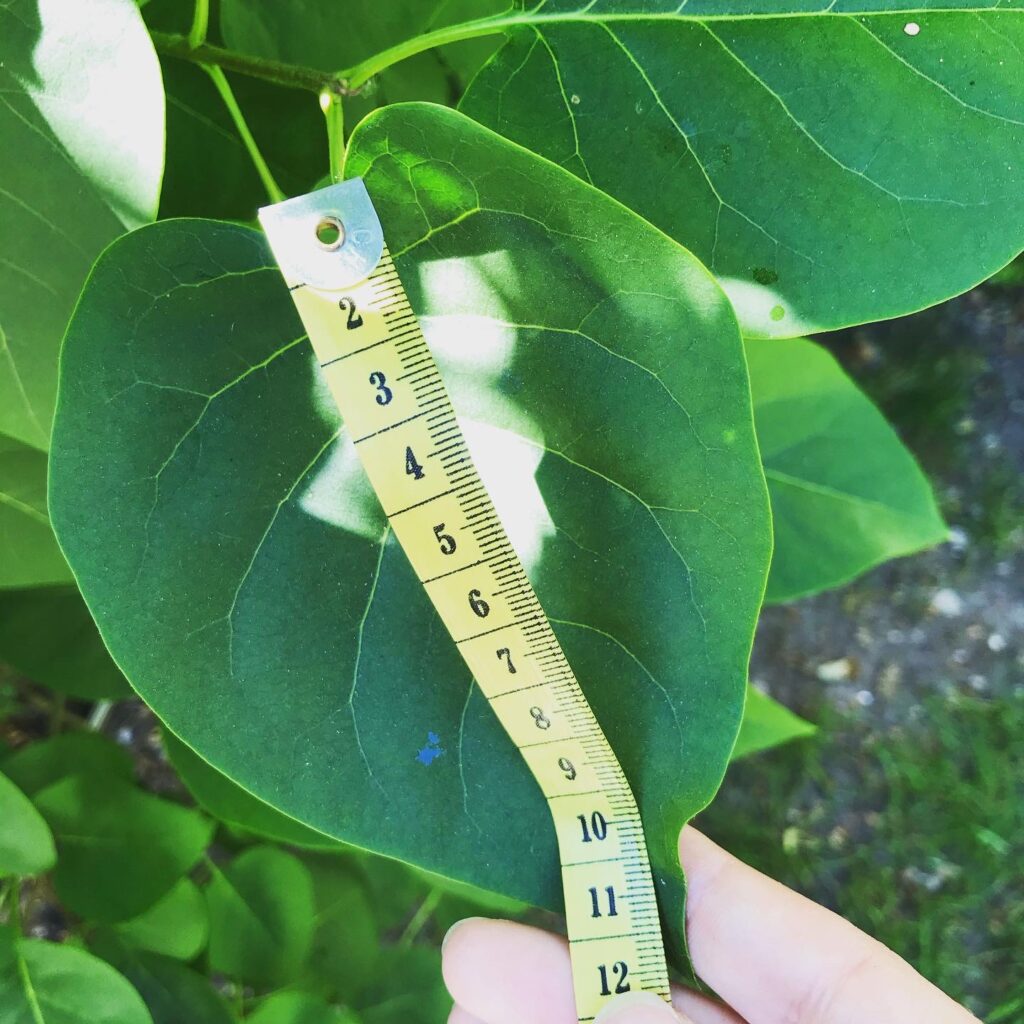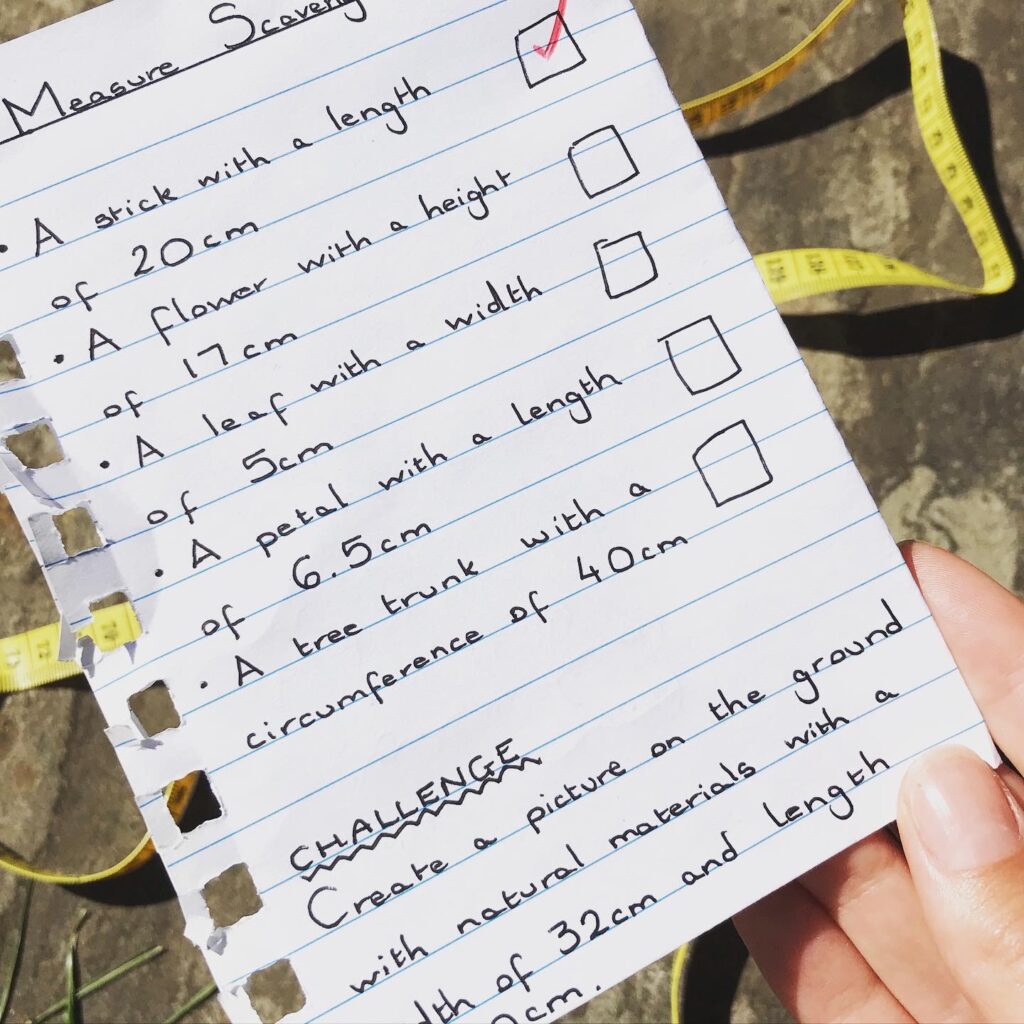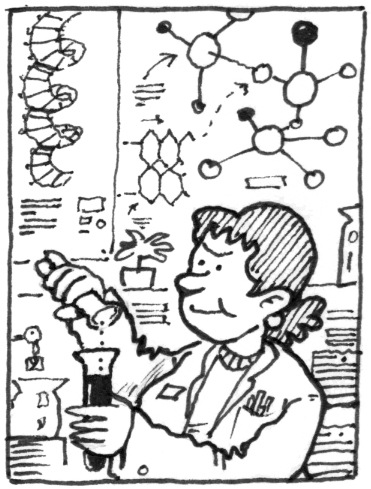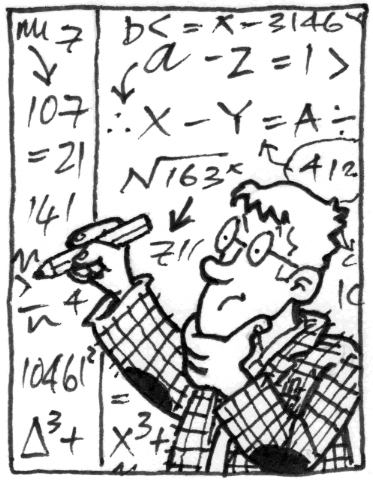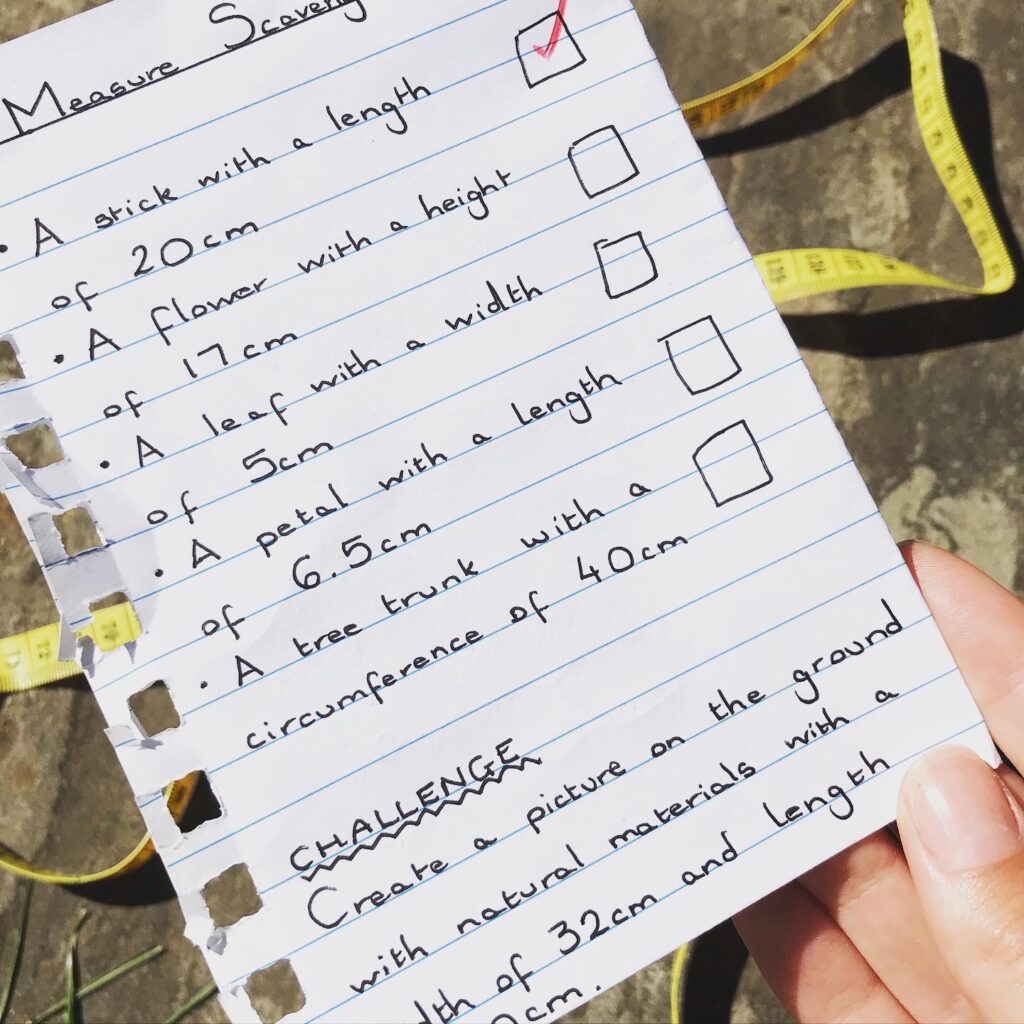
Measure Scavenger Hunt
What different sizes can we find in the natural environment?
How to do it
Note: you will need to prepare the scavenger hunt list in advance. Younger children could measure items in cm’s while older children could have a mixture of cm’s and mm’s.
- Take a copy of the measure scavenger hunt list and decide on an outdoor area that your hunt will take place in (for example, a garden, park or woodland).
- You have 15 minutes to find and photograph an example of each item on the list. You will need to use the measuring tape carefully to make sure you have found an accurate example of each item on the list.
- When the time is up, review the findings and count how many items you photographed.
Optional: Make this into a competitive team challenge and see who can find the most items. Alternatively, try going to a different natural environment to see if you can beat your score.
What are we learning
Measuring tapes help us to accurately measure the length and width of different objects. We have been using the metric system, in which length is measured in millimetres (mm), centimetres (cm), metres (m) or kilometres (km). There are ten millimetres in each centimetre. The natural world is full of many different sizes and shapes. Leaves from the same tree or plant can vary in appearance and size. However, they will always roughly correspond to the same basic shape.
Investigate
Choose your favourite leaf or flower from the scavenger hunt and find out what species it is. You could use a nature book to identify it or use an app such as ‘PlantSnap’.





